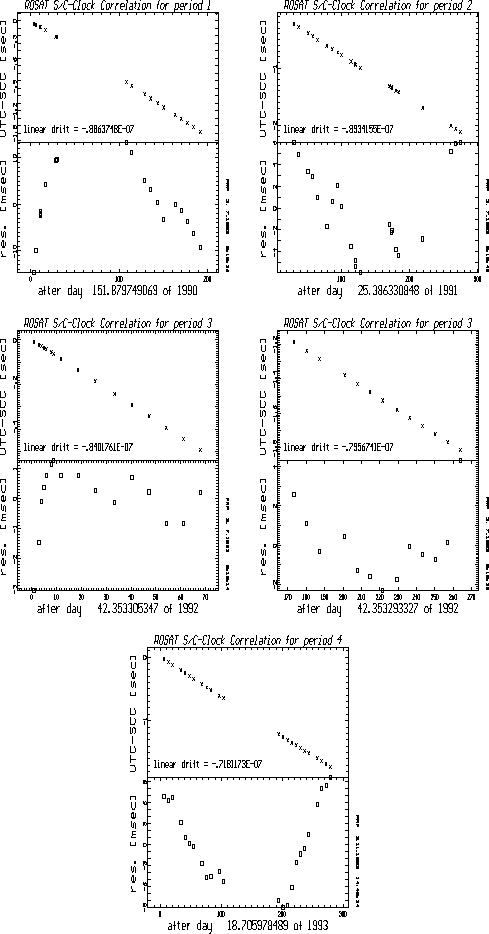| About ROSAT |
ROSAT Home Page | ROSAT Images |
|---|
The standard correlation between S/C clock and UTC does not permit the timing of events down to millisecond accuracy. Therefore, a special method has been implemented:
The central data processing unit of the focal instrumentation (ZDE) runs in a software cycle which is started every second by a pulse provided by the S/C clock. This cycle can be paused by other sources of interrupts, e.g., on the reception of telecommands or the warm start of the computer performed on reception of the on/off-command RESET. Upon the reception of the RESET-interrupt, the ZDE needs 532.8 ms to perform a couple of tasks necessary for resetting some registers etc., then it enters an idle-loop which is stopped on the next one-second interrupt. The time difference between the RESET- and the SECOND-interrupt is measured by a software counter, one count corresponds to 0.0113774 ms.
Whenever the RESET on/off-command is sent (typically once per week during the first ground contact on monday), the time when the command ``leaves'' the antenna is recorded at the ground station. As a source for an additional time delay, the distance between ground station and the satellite has to be taken into account. This information is delivered by GSOC together with the time when the command has been sent. The value of the idle-loop counter is sent to ground by a special telemetry frame. The information from both channels is combined for generating the clock correlation.
The S/C clock exhibits a slight drift
which has been specified to be smaller than ![]() .
The S/C clock is reset about once per year in order to prevent
an overflow of the 32-bit counter.
Occasionally, this has also happened accidentally.
.
The S/C clock is reset about once per year in order to prevent
an overflow of the 32-bit counter.
Occasionally, this has also happened accidentally.
SASS adds an offset to the S/C clock in order to create homogeneously increasing event-times. These event times (not the S/C clock!) are the relevant times for the users and are, for instance, contained in the PETs.
For most applications, it is sufficient to perform a linear regression to the correlation data within a period between two consecutive clock resets. The transformation from event-time (EVT) to UTC for an interval i is
![]()
with DRF is the clock-drift, OFS is the offset added by SASS, and RES is the time of a clock-reset. All the relevant numbers can be found in Tab. 3.6. Clock-period 3 has been split into two sub-intervals at July 1, when a leap second was inserted. Differences between values calculated by this method and the true S/C clock conversion are always less than 10 ms. The residuals can be obtained from the Figures 3.17 a) through e).

Figure 3.17: ROSAT S/C clock correlation for different periods:
a) Period 1, b) Period 2, c) Period 3, d) Period 4,
and e) Period 5